So you have been wanting to go for a dive but worry your watch may not survive the water pressure. Not many watches in the market are strong enough to go underwater with you. In this post, we will have you covered for all you need to know about a diving watch and how to choose one that is bang for your buck.
A diving watch is able to resist high water pressures at a minimally 100 m (330 ft) depth rating. Diving watches are typically designed with a water resistance of around 300 m (980 ft). Through modern technological advances, there are now diving watches that can go much deeper than ever before.
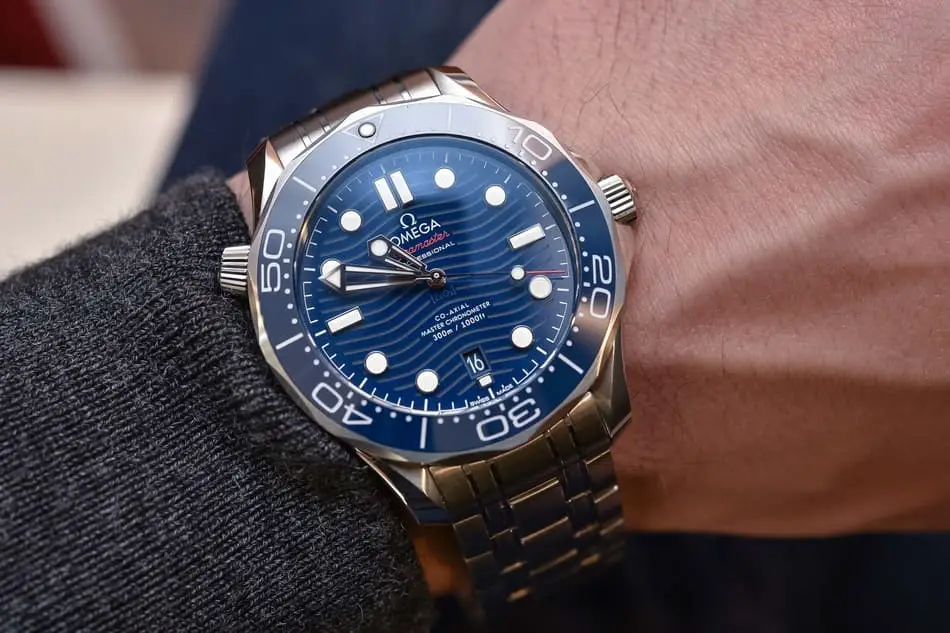
To a large extent, most people buy a diving watch without knowing how the watch works. Sometimes, they don’t even know all the features of the watch, especially when using it underwater.
To make a diving watch highly resistant to water pressure and change in temperature of the seawater, there are actually a set of standards that watch manufacturers must follow when designing their diving watches, and it’s called the ISO 6425.
What is ISO 6425?
Just think of the ISO 6425 standard as the benchmark of what defines the characteristics of a true contemporary diving watch.
ISO 6425 watches must be suitable for activities in depths of more than 100 meters (330 feet). ISO stands for International Organization for Standardization. It’s like the big daddy for setting the highest standards.
Generally, it is not easy for watch manufacturers to get certified by ISO because of the high standards and costs involved.
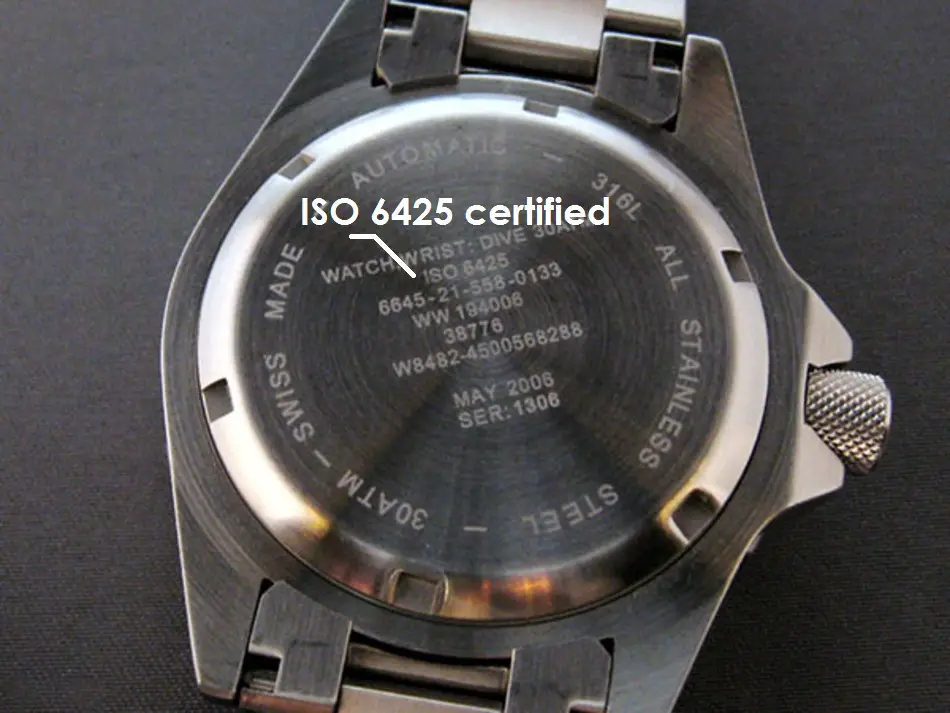
If you know the watch you are getting is an ISO 6425 certified watch, then you can be assured that you are getting a high-quality timepiece. To earn this accreditation, each watch must meet all the requirements set in ISO 6425; Here are some of the things you need to check out for an ISO 6425 standard diving watch:
- The presence of a unidirectional bezel with at least 5-minute markings and a pre-select marker to mark a specific minute marking.
- The presence of clearly distinguishable minute markings on the watch face.
- Adequate readability/visibility at 25 cm (9.8 inches) in total darkness.
- An indication that the watch is running, visible in total darkness. This is usually indicated by a running second hand with a luminous tip or tail.
- Magnetic resistance. This is tested by 3 exposures to a direct current magnetic field of 4,800 A/m. The watch must keep its accuracy to ± 30 seconds/day as measured before the test despite the magnetic field.
- Shock resistance. This is tested by two physical shocks (one on the 9 o’clock side, and one to the crystal, perpendicular to the face). The shock is usually delivered by a hard plastic hammer mounted as a pendulum, so as to deliver a measured amount of energy, specifically, a 3 kg hammer with an impact velocity of 4.43 m/s. The change in rate allowed is ± 60 seconds/day.
- Chemical resistance. This is tested by immersion in a 30 g/l NaCl solution for 24 hours to test its rust resistance. This test water solution has a salinity comparable to normal seawater.
- Strap/band solidity. This is tested by applying a force of 200 N(45 lbs) to each spring bar (or attaching point) in opposite directions with no damage to the watch or attachment point.
- The presence of an End Of Life (EOL) indicator on battery-powered watches.
You can tell how much emphasis is being placed on legibility and visibility of the watch under total darkness in ISO 6425.
The first few in the list above clearly describes how a diving watch should be designed to help you read the watch with high contrast and easily identifiable dial markers and hands.
Why are Dive Watch Cases so Big?
Dive watch cases are generally bigger than other watches because they are designed to withstand high water pressure. Dive watch cases are made of strong materials like austenitic stainless steel to increase buoyancy and prevent corrosion from seawater contact.
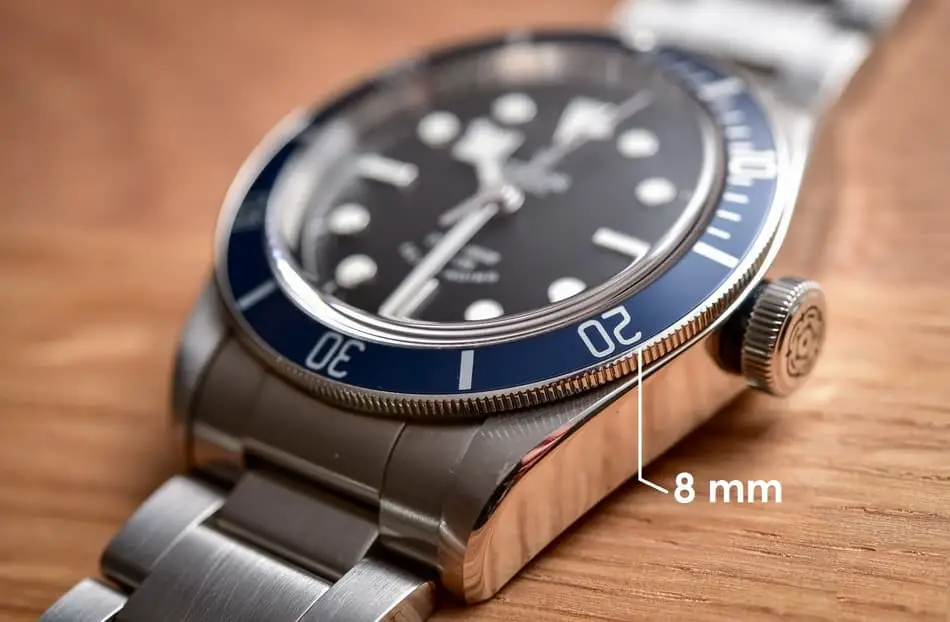
Diving watches are built with such high-grade materials, like austenitic stainless steel, that they are generally heavier in sheer weight. Typically, they are thicker so they can provide adequate protection from external magnetic influences and physical shocks.
Most diving watches have more than 8 mm of case height. Comparatively, an average dress watch has 4 mm to 5 mm of case height.
As to which watch is the most durable, the first watch that comes to my mind is a diving watch, for obvious reasons. A solid diving watch is not just built to withstand pressure during a dive, but also the toughest shocks and external magnetic influences that may cause a regular watch to malfunction.
In fact, most of the vintage watches that I have come across are mechanical diving watches. Rolex and Omega are my personal favorites. Even today, Rolex and Omega truly make some of the best diving watches out there, the fact they’re still around is a testament to their durability and top-quality construction.
What does the water-resistant on your watch truly mean?
It is important to note the water-resistant of your watch because not every watch is made the same. You don’t want to break your 100 meters water-resistant watch by diving 200 meters underwater.
What does 100m water resistant mean on a watch?
A non-diving watch with 100 meters of water resistance does not mean that it can handle 100 meters underwater. In fact, a non-diving watch with 100 meters of water resistance can only endure recreational swimming and snorkeling at best.
A diving watch, however, with a resistance of 100 meters is able to handle diving activities up to 100 meters underwater.
For water resistance in watches, it is divided into 2 categories. One for all other watches and one specifically for diving purposes. Diving watches are built to be able to handle high pressure underwater and they are the only ones truly suitable for diving.
Here is a chart that illustrates the water resistance limit a watch can handle.
| Water resistance rating | Suitability | Remarks |
| Water-Resistant | Suitable under running tap/showers only. | Able to withstand minimum water pressure only. |
| Water Resistant 50 meters | Suitable for swimming only. | Not for diving. |
| Water Resistant 100 meters | Suitable for recreational surfing, swimming, snorkeling, sailing and water sports. | Not for diving. |
| Water Resistant 200 meters | Suitable for professional marine activity and serious surface water sports. | Suitable for skin diving only. Not suitable for scuba diving. |
| Diver’s 100 meters | Minimum ISO standard (ISO 6425) for scuba diving up to the watch’s limit | Not suitable for deep-sea diving |
| Diver’s 200 meters to 300 meters | Suitable for scuba diving at depths up to the watch’s limit | Not suitable for deep-sea diving |
| Diver’s 300+ meters for mixed-gas diving | Suitable for deep-sea diving (helium enriched environment). | – |
What Does a Dive Watch do?
Most people, including myself, have thought that a dive watch is merely a normal watch with the capability to go underwater. After some research, I have found that dive watch actually goes beyond underwater.
An analog dive watch that features a rotating bezel helps you measure the amount of time spent diving so that you know when to resurface for air. By turning the bezel to align with the minute or second hand of the watch, it reminds divers when to get back up to the water surface.
There sure are a lot of moving parts to diving watches. Why do some watch faces turn? The watch face that can be turned is actually the rotating bezel of your watch. This feature comes mostly on diving watches. The purpose of the rotating bezel is to allow you to measure the amount of time taken when diving.
This is a very interesting yet simple way to track the time you are underwater. Here’s how it actually works.
Here’s is my favorite video that teaches you how to use the watch’s bezel to measure and track the time you are underwater.
What Watches do Divers Actually Wear?
A survey from over 500 divers actually tells us that 95% of them are wearing G-Shock Frogman. Besides being affordable and durable, the G-Shock Frogman series is a popular choice among divers for a few reasons:
- Solar-powered (Can last 10 months on a full charge)
- Full Auto EL Backlight Afterglow
- World Time
- Moon Data
- Tide graph
- Dive Time
- Full auto-calendar (pre-programmed until the year 2099)
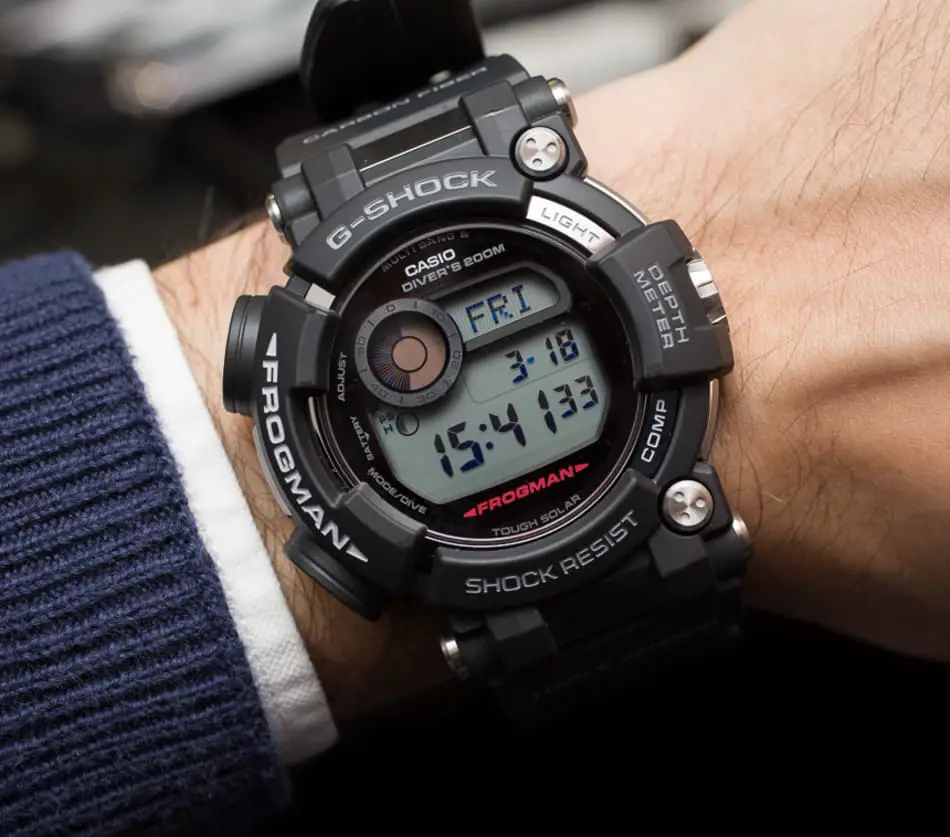
There is much more to this diving watch than we used to see. I can understand why divers are so excited to get it. You may find the full list of features and the latest price here.
Are you surprised that the results did not show up that divers wear Rolexes and Omegas diving watches?
Typically, a dive isn’t a stroll in the park. Diving is not only a dangerous sport, but also a vigorous one, there will be shocks from knocks, higher wear and tear from the outdoors, and seawater contact from a dive.
I guess wearing a $7,000 luxury diving watch isn’t very appealing. For I know I’d be pretty upset if I busted my Rolex while diving.
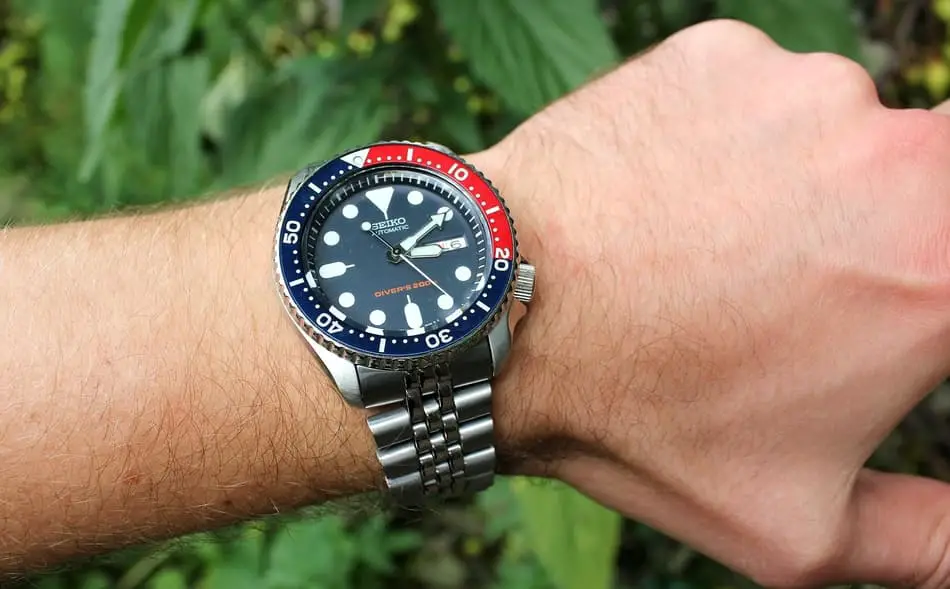
In case you are curious, the remaining 5% are wearing entry-level Japanese brand diving watches like the Seiko XKX series here.